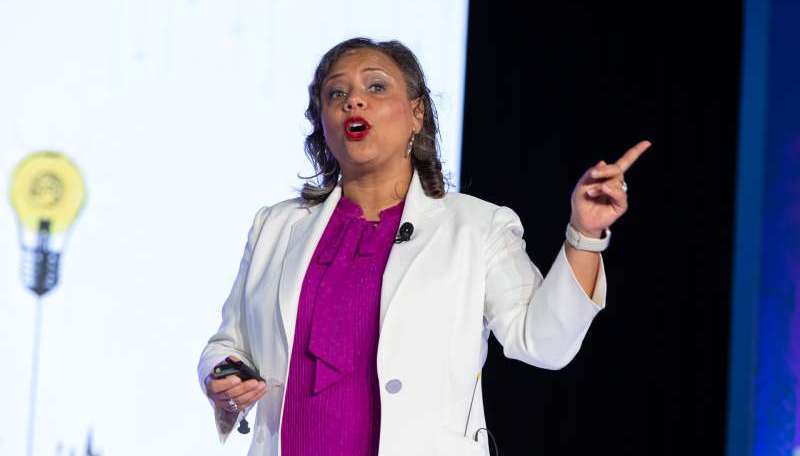
As the government-wide chief diversity officer (CDO) for the Biden-Harris administration, Dr. Janice Underwood is looking to use technology as an enabler for diversity, equity, inclusion, and accessibility (DEIA) efforts.
Underwood joined the administration in May 2022 as the director of the Office of Diversity, Equity, Inclusion, and Accessibility (ODEIA) at the Office of Personnel Management (OPM). In this capacity, she supervises OPM’s technical assistance role in the government-wide DEIA initiative established by President Biden’s June 2021 DEIA executive order (EO).
As part of that EO, Underwood established a DEIA index in the 2022 OPM Federal Employee Viewpoint Survey (FEVS). Notably, the survey found that 69 percent of Federal employees report positive perceptions of agency practices related to DEIA.
However, Underwood has been tasked with a goal to increase that DEIA index score by six percentage points by fiscal year (FY) 2026.
“The legacy that I will have will either be when Dr. Underwood came in as the nation’s first government-wide chief diversity officer, did she work and labor to get that score up? And when we are able to release the 2023 scores, we need to see did it move from 69 percent? Or did it go down from 69 percent? And so that is something that we’re all staying tuned towards,” Underwood said in an exclusive interview with MeriTalk.
“It does keep me up at night because that’s my metric of success. That’s what I’m here to do,” she added. “Everything we do funnels into raising that DEIA index because it really is the way that we in the Federal government for the first time are going to measure are we doing what we say we’re going to do.”
One way Underwood is looking to increase that index performance is through the U.S. Chief Diversity Officer Executive Council (CDOEC), which commemorated its one-year anniversary last month. The council was established to help implement and sustain a national strategy for DEIA across the Federal government.
Another exciting initiative is the CDO survey, Underwood said, which tells her how the CDOs across government are doing in their DEIA efforts.
However, top of mind for Underwood is technology, which she said “is probably the best example of workforce equity.”
“In terms of technology, what we know for sure is that we have five generations in the Federal workforce right now or in the labor force, writ large, and everyone has different needs when it comes to technology,” she said. “When it comes to what they need to be successful to access that technology, we need to give our workforce various accommodations to ensure that they are leveraging technology to meet their agency missions, that we’re making technology available in terms of workplace accommodations.”
The statistic that Underwood said frightens her the most – and that should probably frighten everyone – is that less than seven percent of the Federal workforce is under 30 years old.
Therefore, she explained when the Federal government engages with early career seekers, their technology needs may be drastically different than the needs of someone who is planning to retire after a 40-year career in the Federal government.
And while those needs could also be similar, “what we do know is that everybody’s entry point into how to leverage technology is different,” Underwood said.
“That’s a dimension of diversity that’s top of mind for my team, and that is universal for every Federal agency,” she said, adding, “We have to make sure that we’re thinking about technology with a DEIA lens because ultimately, we don’t want to have unintended inequitable outcomes because we didn’t leverage technology in culturally affirming ways.”
Nevertheless, Underwood said OPM – in partnership with its Human Capital Data Management and Modernization (HCDMM) Directorate partners and its chief data officer – is turning to technology in the rollout of its DEIA Dashboard.
“That is going to be super exciting, and our Federal agencies are already beta-testing it and working with it,” Underwood shared.
“A lot of work went into this across government, and it will eventually be able to allow agencies to tell a fuller, more complete story of their DEIA efforts using a data-driven process,” she explained. “And that exactly is where we need to be so that we can keep the conversation in a transformative place, in terms of what does the data tell us? What story does the data tell us so that we can approach the solutions from a data-driven perspective?”
“Now it’s time, now that I’ve created this amazing office and aligned it to the goals of government-wide DEIA, it’s now time to sort of build that sustainability. It’s top of mind,” she said. “Now we need to just continue doing the work.”
So, what’s next for Underwood’s DEIA efforts? The chief diversity officer said that all Americans can stay tuned for the 2023 DEIA Annual Report from her office, which is coming out in December.
